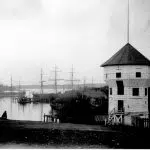
Residents warned as Louisiana braces for Hurricane Ida
NEW ORLEANS (AP) — Hurricane Ida has strengthened to a Category 2 storm in the Gulf of Mexico as it approaches Louisiana.
The U.S. National Hurricane Center says the storm’s maximum sustained winds increased Saturday afternoon to 100 mph (155 kph). Ida is expected to strengthen to an extremely dangerous Category 4 hurricane before making landfall likely west of New Orleans late Sunday.
THIS IS A BREAKING NEWS UPDATE. AP’s earlier story follows below.
NEW ORLEANS (AP) — Weather forecasters warned residents along Louisiana’s coast to rush preparations Saturday in anticipation of an intensifying Hurricane Ida, which is expected to bring winds as high as 140 mph (225 kph) when it slams ashore Sunday.


